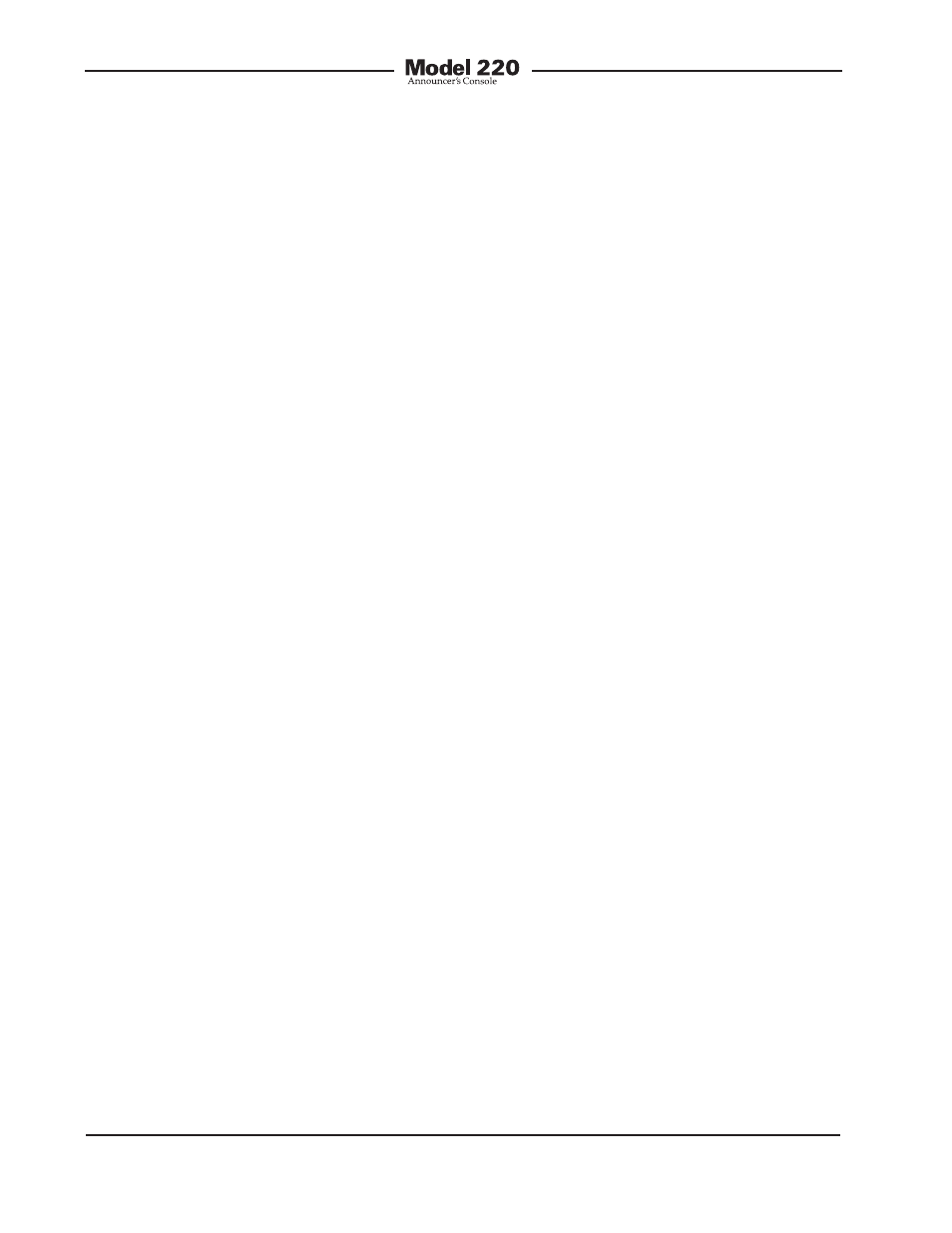Ifb input, Cue sources, Headphone output – Studio Technologies 220 2013 User Manual
Page 8

Issue 5, February 2013
Model 220 User Guide
Page 8
Studio Technologies, Inc.
The main button mode configures how the
main output, when it is in the “latched” on
state, responds to talkback activity. One
choice momentarily turns off the main
output when talkback is active, returning
the main output to the on state when the
talkback function has ended. The other
choice “unlatches” the main output in
response to a talkback function.
IFB Input
A broadcast-standard “wet” (DC with au-
dio) IFB circuit can be directly connected
to the Model 220’s IFB input. Originated
by sources such as the RTS™ 4000-series
IFB system or IFB interface devices from
Studio Technologies, the connected IFB
circuit can provide DC power to operate
the Model 220 as well as two channels of
cue audio.
Cue Sources
The Model 220 allows up to four audio
sources to be selected for routing to the
headphone output. The sources are IFB
channel 1, IFB channel 2, line input 1, and
line input 2. Each source can be individu-
ally assigned to the left channel, right
channel, or both left and right. This allows
a wide variety of stereo and mono head-
phone mixes to be created.
The two audio signals associated with the
IFB input can be assigned to the head-
phone output. Originating in production
trailers, control rooms, or remote loca-
tions, these unbalanced sources normally
provide DC power and program-with-inter-
rupt audio on one channel and program-
only audio on the other.
For application flexibility, two line-level
audio sources can also be connected to
the Model 220. Possible signal sources
include off-air receivers, wireless IFB
systems, and audio consoles. The con-
nected signals can be from two indepen-
dent sources, or could be a stereo audio
feed such as would be associated with a
broadcast music event. Two trim poten-
tiometers, located on the bottom of the
unit, allow signals with wide nominal audio
levels to be cleanly interfaced.
Headphone Output
Two rotary controls are provided for user
adjustment of the headphone output
levels. For application flexibility, the actual
function of the two “pots” is configurable.
For traditional on-air sports applications
they can be selected to the dual level con-
trol mode, which provides independent
control of the left and right channel vol-
ume. For use with stereo cue signals, or to
support user preference, the level/balance
mode can be selected. In this mode one
control adjusts the overall level of both
the left and right channels, while the other
allows adjustment of the left/right level
balance. To help minimize the chance of
broadcast cues being missed, both level
control modes can be configured so that a
minimum headphone output level is main-
tained. Alternately, the headphone output
can be set to fully mute when the controls
are at their minimum position.
The headphone output was designed to
meet the needs of contemporary head-
phones and headsets. Specifically, the
output circuits act as voltage, rather than
power, drivers. In this configuration they
can provide high output levels with very
low distortion and noise, along with mini-
mal current consumption. The output cir-
cuits are configured to safely drive stereo
or mono loads. This ensures that all types
of headphones, headsets, and earpieces
can be directly connected.
